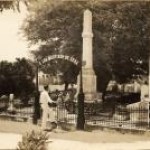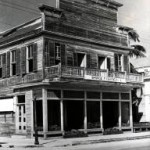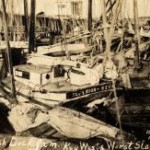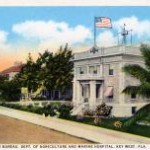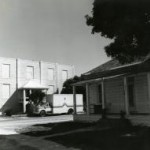FL Div Hist Res
The Key West Cemetery
The cemetery consists of 19 acres with an estimated 100,000 individuals buried on the grounds. It was built after the devastation of a previous city burial site during the 1846 Havana Hurricane. The cemetery is divided among a number of parcels that reflect the cultural diversity that built Key West and continues to characterize the community today. It is best known as the resting place and commemoration statue for two dozen crew members of the USS Maine disaster in 1898.
Sponge Warehouse
Key West entrepreneurs have used this building, built in 1896, for a wide range of commercial businesses. It is a classic example of longevity achieved through adaptive reuse. Through its history, this building served as a sponge warehouse, dry goods store, haberdashery, office building, wholesale furniture store, as well as several other purposes. Having survived hurricanes, fires, and economic fluctuations for more than a century, this historic commercial building remains, serving the needs of the Key West community.
1909 & 1910 Hurricane
Key West experienced two major hurricanes in 1909 and 1910. Both hit in October and were rated between a category 3 & 4 hurricane. In 1909, more than 400 buildings were destroyed. Many of the buildings were blown off their foundations, collapsed from hurricane force winds or were washed away. Nearly every ship and dock in the city was badly damaged or destroyed. Estimates of overall damage in Key West were set at one million dollars in 1909 currency.
Weather Bureau
This building represents the vital role accurate weather forecasts played in the growth and vitality of Key West. Before the Weather Bureau, Key West residents relied on their own measurements and telegraph reports to predict oncoming storms. The weather station brought access to more sophisticated weather measurement techniques to warn of dangerous weather. It was often the front line in forecasting the power and path of tropical hurricanes. The building was built by the U.S. Army and served from 1912 - 1957.
Indian Block
After the Great Fire of 1886, Indian Block became a popular building material. The all concrete material was heralded as fire proof. Portable concrete forms were used to shape hand mixed cement into uniform blocks of concrete with an easily recognizable rusticated face. When the concrete cured, the forms were removed and the blocks were stacked in place with grout to hold them together. While fire resistant, the unreinforced block walls were susceptible to hurricane winds.
